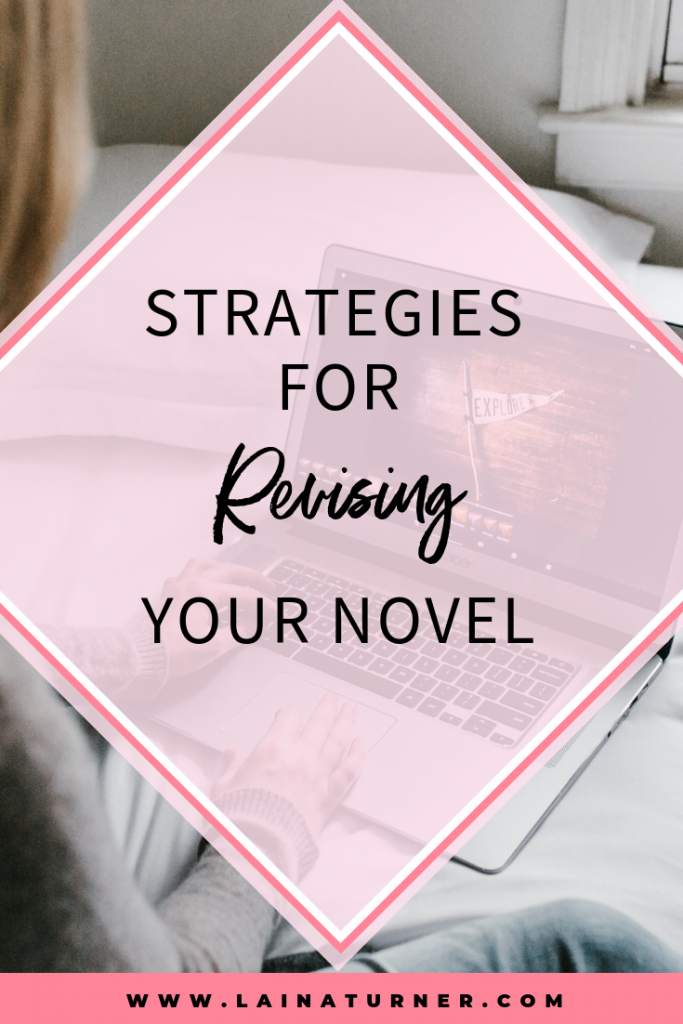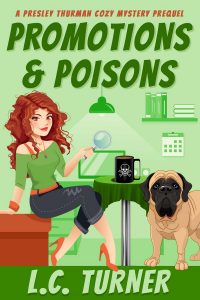Strategies for Revising Your Novel
Strategies for Revising Your Novel
I love writing but the revision process…I can’t exactly say the same.
I’m not so much a fan.
I don’t mind it the first time I go back through my rough draft because it’s still new and exciting at this point. But by about the 25th….I’m tired of the story, and the characters, and want to move on.
Unfortunately, that is about the time the real hard work starts. Self-publishing isn’t for the faint of heart.
Don’t get me wrong. I love all my books (some more than others) but the revision process is tedious and at times mind-numbing. But it’s a necessary step if you want to your book to be kick ass.
So what are some things you should look for during your revision process?

PLOT
Too easy or too hard – There is a fine line between too easy that the reader has the ending figured out by page 25 and such a complicated story that the reader stops caring what happens.
If you’re going to pick a side to lean to, I’d err on the side of too hard. Because easy is BORING. At least hard might piss off the reader enough that they’re determined to read to the end and figure it out.
Though they may never read another one of your books again.
The general thought is genre novels are more plot driven while literary fiction is more character driven. The reality is a good book will have both elements. Just to different degrees depending on the story.
Low stakes – For the majority of novels, there has to be something at stake. Typically, more than one thing at stake to varying degrees. It’s what creates the excitement. The reason for people to keep reading because they want to see what happens next.
At least one element in the story is a big deal or a high stake. Like the main character has to stop someone from murdering the president. Most stories don’t solely focus on one thing. There are several other low stake elements that come in to add depth to your character or set up for the main event.
There has to be a reason to root for a character. Something for them to overcome to create that tension and excitement.
Confusing storyline – I read Faulker’s The Sound and the Fury in high school. Didn’t understand a word of it. Tried re-reading it a few years ago and still didn’t understand it. Multiple points of view, stream of consciousness writing, and a mentally ill character who doesn’t communicate well-created confusion in my head.
My brain felt like it was on a merry go round.
Even though it’s on the top 100 list of best literary novels, it wasn’t a commercial success back in its time (or now I’m sure). That book wasn’t written for entertainment purposes.
My point is when it comes to entertainment people need to understand what they’re reading or it won’t entertain them. You want to engage them in your story.
Keep that element of suspense without making the story intentionally difficult for them to follow.
Inconsistencies – Books are written over time. Typically, a long period of time. So what you write down in chapter 1 about how the view looked form the window you may have forgotten by chapter 10. And completely contradict yourself. Which is going to confuse the reader.
Looking for inconsistencies in your draft is especially important. Especially, for writers who don’t outline. When you’re free writing without a plan to follow it can difficult to remember what you’ve already written.
When reading over your drafts, it’s smart to schedule longer chunks of time to read several chapters and write down what needs to be fixed. So your not fixing as you go which again can make it more challenging to keep everything straight.
If you read 100 pages in a sitting, you will be more likely to catch those errors.
Insufficient ARC’s – an ARC is the process of building up of tension to an event, the event happens, then emotions go back down until the next ARC. It’s what keeps readers on the seat of their pants.
Think of plot as the whole, ARC’s are scenes, and stakes are one of those elements within an ARC. When I’m writing, I visualize my ARC’s like the carrot pulling people along in my story. Teasing, and enticing, and creating interest, so they keep turning the page.
There are many different methods of setting up your ARC’s. At the very least you want to have 3 basic points.
Setup, rising action and stakes, resolution.
These ARC’s will usually get more intense as they reach the climax of the book. In any case, you want to keep them going to keep engaging the reader.
CHARACTERS
Boring – When creating characters, especially the main ones, they can’t be one dimensional. No one likes the person who is the same all the time or has a perfect life.
Readers want characters with, well, character. Flaws, human insecurities, and hangups. Even though people read to escape the real world for a time your characters, need to have ups and downs.
Even if they’re not. Robots need to have some feelings too or us human readers wouldn’t connect to them either. And who doesn’t love R2D2? He doesn’t speak English, but he sure has a personality.
Unrealistic – There has to be a certain element of your character that is believable. Even in sci-fi and fantasy where there are often nonhuman characters or not a traditional human, you will notice that at some level there is a trait, a behavior, that the reader can identify with.
You also want to make your main character likable. Readers won’t want to root for him or her if the character is jerk or whiny.
Predictable – This can be a hard one. Many books are formulaic. If you’re a romance lover, you’re probably familiar with Harlequin Romances which follow a very strict set of guidelines. Yet my grandmother had every one ever made up to the time she died. In sequential order on bookshelves in her sun room.
Man, I wish I had a smartphone back then so I would have pictures. It was pretty amazing.
Even taking the romance genre out of the equation books, and movies, are often based on that 3 step ARC.
While we all like to root for the happy ending, we don’t want it to be a predictable path. What’s the fun in that?
That’s what I enjoy about writing mysteries. I have fun plotting out how a normal-seeming crime can have a non-straightforward resolution. One that is believable but not all that obvious.
COPY
Placeholders – I make this mistake a lot. Thank GOD for my amazing editors who catch them. I’ll often get caught up in my writing, and a new character comes on the page who I wasn’t expecting. And I have no idea what his or her name is.
So I put down XXXXX thinking I will go back and find and replace it when I’ve to figure it out. Well, sometimes I forget. Or don’t get them all.
Unnecessary words – I discussed this in a previous editing post, but I can’t say it enough. TIGHTEN UP your writing. Get rid of that, just, very, words ending in -ly, etc
These are a few of the many, many things you want to look out for when polishing your novel. That’s why spending money on an editor is SO WORTH IT!
Where do you seem to find the most issues in your revision process? I know I tend to make the same mistakes over and over. Drives my editors nuts, but it’s my ingrained bad habits.


